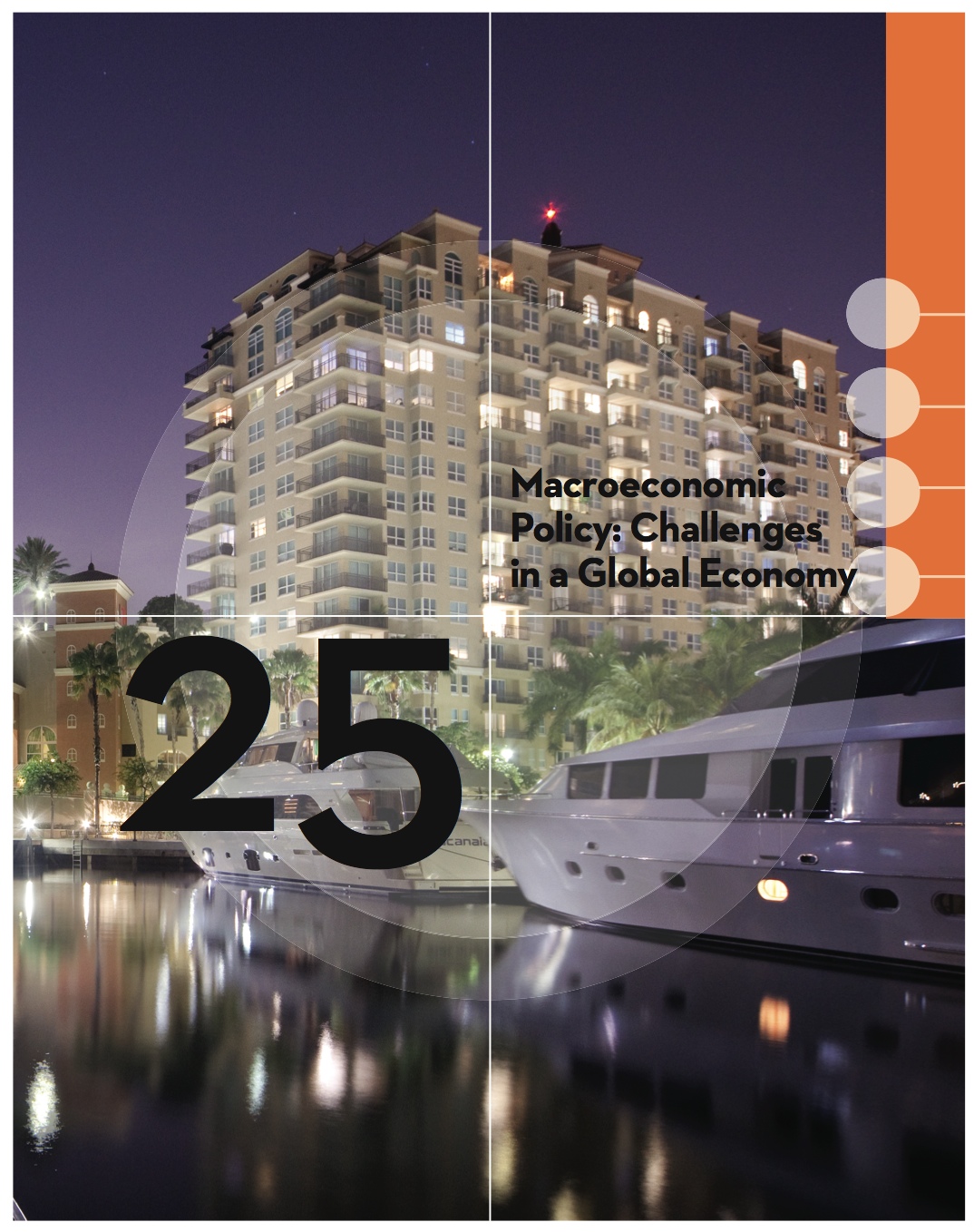Chapter Introduction

After studying this chapter you should be able to:
- Describe what caused the housing bubble and the financial crisis.
- Describe the extraordinary steps that Congress and the Fed took to prevent the collapse of the financial system.
- Explain what Phillips curves are and what relationship they postulate between inflation and unemployment.
- Describe how inflationary expectations can take on a life of their own and stymie policymakers.
- Contrast adaptive expectations with rational expectations and describe their implications for policymakers.
- Critique the rational expectations theory.
- Describe what jobless recoveries are and why they might arise.
- Explain how fiscal policy and monetary policy might be appropriate responses to resolving jobless recoveries, deficits and debt, and rising inflation.
- Discuss how fiscal policy and monetary policy affect economic growth in a globalized economy.
Between 2003 and 2007, the U.S. housing market achieved gains at a rate never before seen in its history. As soon as a house or condo was put on the market, buyers were eager to snatch it up. Banks were eager to lend to these buyers and bent over backward to accommodate them, even lowering standards if need be. If they did not, other banks were ready to jump in. The upshot: new types of loans targeted to borrowers who otherwise would not have qualified for conventional loans. And the government facilitated the process by keeping interest rates low.
These factors provided incentives for individuals and firms to consume and produce. Luxury condominiums were built throughout the country, especially in popular vacation destinations such as Miami, Phoenix, and Las Vegas. New housing developments formed, each adding hundreds or thousands of homes with the expectation that buyers would come. And they did, helped by banks that became even more aggressive in their lending, advertising attractive mortgages that required no down payment, interest-only payments, and little to no credit.
Over this period, average home prices in the United States increased by 41%. In Nevada and Arizona, home prices rose by almost 80%. The growth in the housing market spurred other industries, such as home furnishings, insurance, and even automobiles. Individuals were eager to buy, developers were eager to build, banks were eager to lend, and investors were eager to put money in securities backed by the value of housing.
Unfortunately, the house of cards eventually collapsed in late 2007, with the effects still felt five years later. The worst financial crisis in generations led to a restricted lending market, a severe recession, and a long jobless recovery.
What does macroeconomics have to say about the effects of a deep economic recession and a slow economic recovery? Quite a bit, actually. We have seen in previous chapters how the Fed and the federal government intervene in markets to promote long-term economic growth and stability in employment and prices. But this is much harder than it might appear to be: There is no magic formula easily discernible to all that will correct each problem.
Before the 1930s, common wisdom was that the economy was best left alone. The Great Depression changed that, and ever since then the government’s role in economic stabilization—smoothing the business cycle—expanded substantially.
This chapter studies the economic policies that address the macroeconomic issues facing the world today: persistent unemployment, long-run inflation, debt, and economic growth. One challenge is the existence of a potential tradeoff between inflation and unemployment. Another is the potential tradeoff between debt reduction and economic growth. These potential tradeoffs influence the macroeconomic policies chosen to guide the economy.
The chapter begins with a broad overview of the factors leading to the 2007–2009 Great Recession (as it is now known) and the slow recovery, and includes a short discussion of policy options. The chapter then studies several theories regarding the effectiveness of macroeconomic policy, including the Phillips curve on the potential tradeoff between unemployment and inflation, the rational expectations argument about the ultimate ineffectiveness of policy, and the new Keynesian response.
Finally, we discuss the economic issues that influence the future of our economy. We focus on the effects of deficits and growing debt, persistent unemployment, and globalization. We use the macroeconomic tools discussed throughout the book to analyze how economic policies affect our economy and our standard of living.